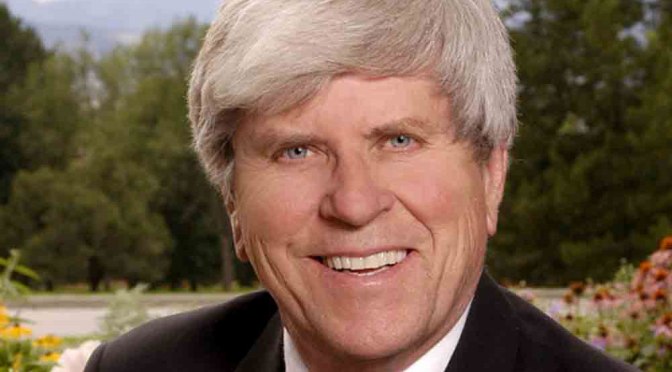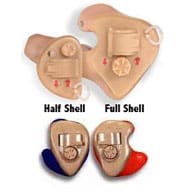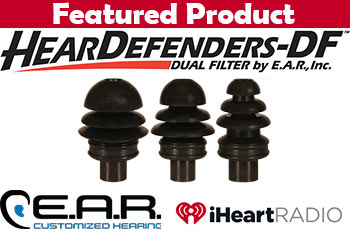- 800.525.2690
- [email protected]
- Mon - Fri: 8:00 - 4:30
Capitalizing on Opportunities in Hearing Care: An Interview with Garry Gordon

Audiologist Garry G. Gordon is the owner of EAR Inc in Boulder, Colorado, a developer and distributor of specialized hearing systems. Based on an early partnership he formed with Sydney Gurschkov, PhD, of Insta-Mold Products Inc, Gordon’s business also markets silicones to the hearing healthcare industry in addition to industrial, military, motor sports, music, and recreational accounts. Active in the hearing care industry for more than 40 years, Gordon has carved successful business niches in the areas of occupational and recreational hearing care, and hearing protection markets worldwide.
Hearing Review caught up with Gordon upon his return from several weeks of national and international business travel, during which he made valuable new business connections and gave presentations to audiology students and faculty on how to find success in hearing care. He shares with HR readers some of the wisdom he has gleaned from his travels and many years in the industry. It is his hope that his experiences and insights can serve as a template for those in the hearing healthcare field.
HR: Let’s jump into your hearing care career story from its inception: Where did you receive your audiology training, and what did your training cover?
I attended Western Michigan University, Colorado State University, and the University of Colorado, and I have degrees in both language and hearing specialties.
HR: Was there anyone in particular who influenced your career?
There were many people who influenced my career, including Charles Van Riper, PhD, Roger Maas, DEd, Richard Krug, PhD, and Sydney Gurschkov, PhD.
HR: How and when did you establish your business, EAR Inc, and what factors or opportunities inspired you to establish the business?
I established EAR Inc in 1971 while I was still a student at the University of Colorado working on my PhD. My adviser at University of Colorado, Dr Richard Krug, was very influential in my decision to start a business. Other factors that inspired me included my exposure to industrial, audiological, medical, and recreational account opportunities. Just to clarify, EAR Inc and Insta-Mold Products Inc were 2 separate companies and remain so. We continue to operate as a team and market our products and services worldwide. EAR Inc is a marketing arm for companies engaged in producing specialized hearing health care products and services. We have approximately 2,500 different distribution points worldwide.
HR: Can you explain how your business grew from being primarily engaged as a distributor for hearing conservation products and services to include other areas?
When I first established EAR Inc, it was focused on supporting the needs of major industrial accounts that had to comply with state and federal regulations regarding noise. My business grew substantially while I was attending the University of Colorado, and I provided compliance training to many companies during that time, including IBM, Martin Marietta, General Cable, Beech Aircraft, Pillsbury, and Coors, among others.
Soon, other opportunities presented themselves. I was invited to become involved in marketing audiometric equipment for a 4-5 state region. I eventually expanded this side of my business with a core group of employees. They later purchased this division of the business from me and expanded it, and recently sold it to William Demant.
I branched into other areas of business and marketing as well. I created the National Ear Care Plan (NECP) that provided cost-contained hearing healthcare benefits to large corporations such as Motorola and Bethlehem Steel. NECP was profitable, and was eventually purchased. I continue to see opportunities to duplicate this success with large corporations and recreational groups. For example, Starkey has positioned itself as a hearing health provider to the National Rifle Association (NRA), which has well over 6 million members that have an estimated 47% level of hearing loss. I am certain there are numerous other recreational and industrial groups that could benefit from this type of service.
HR: I believe you have more than one website you use to provide services and promote hearing conservation. Can you share those with our readers?
The primary website for our business is www.earinc.com. When we coined the term “Recreational Audiology,” we also developed www.recreationalaudiology.com. To promote hearing conservation, I also took 40 years of experience and wrote a song to see if we could use music as a vehicle to motivate people to use hearing protection. We produced a music video of my song, which can be viewed at www.earinc.com/vid.
HR: Clearly, recognizing new opportunities for business and marketing your services in those areas has been a key to your success. Can you discuss your 3 top products from EAR Inc, and explain why you think these have been so successful? For example, are they targeted to particularly high-demand industries or market areas?
There are 3 products from EAR Inc that strongly influence our success and, therefore, the focus of our marketing efforts: INSTA-MOLD products, HearDefenders-DF, and Electronic Ear Plugs.

“Chameleon Ears,” an INSTA-MOLD product available from EAR Inc.

Electronic Ear Plugs from EAR Inc.

HearDefenders-DF (Featured by iHeart Radio)
We are entering an age when we are seeing more people experiencing hearing loss much sooner than they should for their age. This is due, in part, to excessive noise exposure. Some of these people need noise protection with maximum attenuation, while others need to have the ability to hear while being protected.
The hearing protection market is huge, and continues to grow into the billions of dollars per year. Many people who are seeking hearing protection also need the products and services offered by audiologists and hearing aid manufacturers. Both entities need help to understand these markets and their requirements.
HR: What kinds of changes have you seen in the hearing healthcare and hearing protection markets in recent years, and what appears to be driving those changes?
I’ve seen changes that have been driven by both retail and the Internet. Greater consumer awareness has certainly been facilitated by the growth of the Internet, and we continue to recognize new distribution points for both hearing aids and hearing protection. We are meeting many consumers who have purchased products online or from big retailers such as Costco, Wal-Mart, and Cabela’s.
It would be my professional guess that, if consumers remain content with the products and services they purchased from these retailers, they will not set up appointments with traditional clinical or audiology outlets as we know them. At the same time, I don’t see the current distribution points disappearing, but I do think it is critical to incubate new ideas and marketing strategies that meet future requirements.
I also predict we will see more people purchasing acceptable amplification labeled as personal sound amplification products, or PSAPs. This trend can be seen with the ads for PSAPs in publications from the AARP or American Automobile Association. Sales for PSAPs must be successful since expensive ads continue to reappear on a regular basis.
With such changes appearing in the hearing markets, I would add that I believe it imperative that audiology programs include business classes in their training curricula. Such academic training should be designed around how to position audiology expertise into the open fields and incubate new ideas.
HR: Speaking of training, you recently gave a series of lectures to health students at Western Michigan University (WMU) and other schools, covering how you parlayed your audiology education into a successful business. Can you share a few key points or highlights from those lectures with our readers?
I have provided lectures and training seminars extensively across the United States and abroad. This is in addition to the fact that EAR Inc travels worldwide to display both products and services, which exposes people to our offerings. The need for professional hearing healthcare products and services is much the same, no matter where I go. It is critical for both faculty and students to recognize where these opportunities exist and how to market themselves. The same would apply to companies that manufacture both hearing aids and different types of specialized hearing protection products.

My discussion with students and faculties in North America, Europe, and Japan included how to become engaged and involved in markets where their expertise would be welcomed—especially if they knew the products and services that were desired. The lectures included different avenues of marketing that create awareness. I close many of my lectures and seminars with basic fitting demonstrations, and I invite students and faculty to participate. At WMU, the students practiced on their own well into the evening after my presentation!
As I have said in my lectures, the potential markets that offer hearing care opportunities include industrial, music, shooting and hunting, sports, water sports, aviation, military and law enforcement, fire fighting, auto racing and motorcycling, and sleeping.
EAR Inc covers all these different hearing market categories. Additionally, our business offers custom hearing protection that can be solid, filtered, or electronic, and can be made on the spot or in the lab. We offer products that are targeted to consumers interested in other areas as well, such as radio communications.
HR: Would you care to share your forecast for the future direction of hearing care and growth into new areas or opportunities?
I am very optimistic about our future regarding the need for specialized hearing products and services. The world has become a noisy place. Of particular importance will be the leadership—from manufacturers, professional organizations, and audiology faculty—that is required to capture the potential sales and services available. I predict that PSAPS and retail outlets will play a big part in helping consumers receive hearing assistance. Scanners will also become a big opportunity for both audiologists and manufacturers. The future looks bright for hearing care, but it is imperative to understand both the products and services desired, and how to market them.
HR: Do you have any other observations or insights to share?
I think it’s fair to say that manufacturers have historically depended largely on audiologists, physicians, and hearing aid dispensers to market their product lines. Today that has changed. We are witnessing hearing healthcare companies displaying products and services at large trade shows where audiologists and hearing healthcare professionals do not normally market their products and services (ie, CES, NRA, NAMM, etc). Exposure like this leads me to believe that larger companies are working to discover new distribution points or connections for products and services beyond the hearing care market. Many companies have managers who know how to move large volumes of products into new arenas. Many big outlets, such as Costco and Cabela’s, offer their customers attractive discounts and cash-back returns for using their credit cards.
During the annual AAA Convention, I have also seen a number of new international companies from China, South Korea, and Europe reappear year after year. It would be my assumption they are getting business and might possibly be engaged in setting up offices within the US.
The market conditions are presenting serious changes in addition to many exciting opportunities for both manufacturers and distributors who have effective leadership to make things happen. Providers and academic centers need to stay on top of these changes and become proactive. Knowledge combined with experience will become a big equalizer in future.
HR: What advice would you give to audiologists or hearing instrument specialists just starting out, particularly those who may be interested in starting a business?
It is important to know that many people you will meet in each of the different hearing markets will ask about hearing aids or PSAPs, so it is important to be knowledgeable in these areas. You will likely need more than just your academic training to participate in the hearing care industry. For example, in many cases you will need to be aware of issues such as security clearance, safety certifications, and insurance before you are permitted to service certain accounts.
Another big need in the hearing industry will be the ability to help those with tinnitus. The list goes on and on, and you can venture into uncharted territory. We are even working on a project to help safeguard the hearing of military canines.
My advice to hearing care professionals just starting out is to use your resources, have an eye open for differentiation, and work with people who have the expertise to enable your success. I had a lot of help and continue to use my resources to grow the business and drive our success. Maybe that is why we have existed for over 40 years! We are familiar with the territory, in addition to the requirements, and those can be the key to your success as well. As they say, follow the money and think with your head—not always your heart—when it comes to the management of your career.
View the interview in its original form here.
